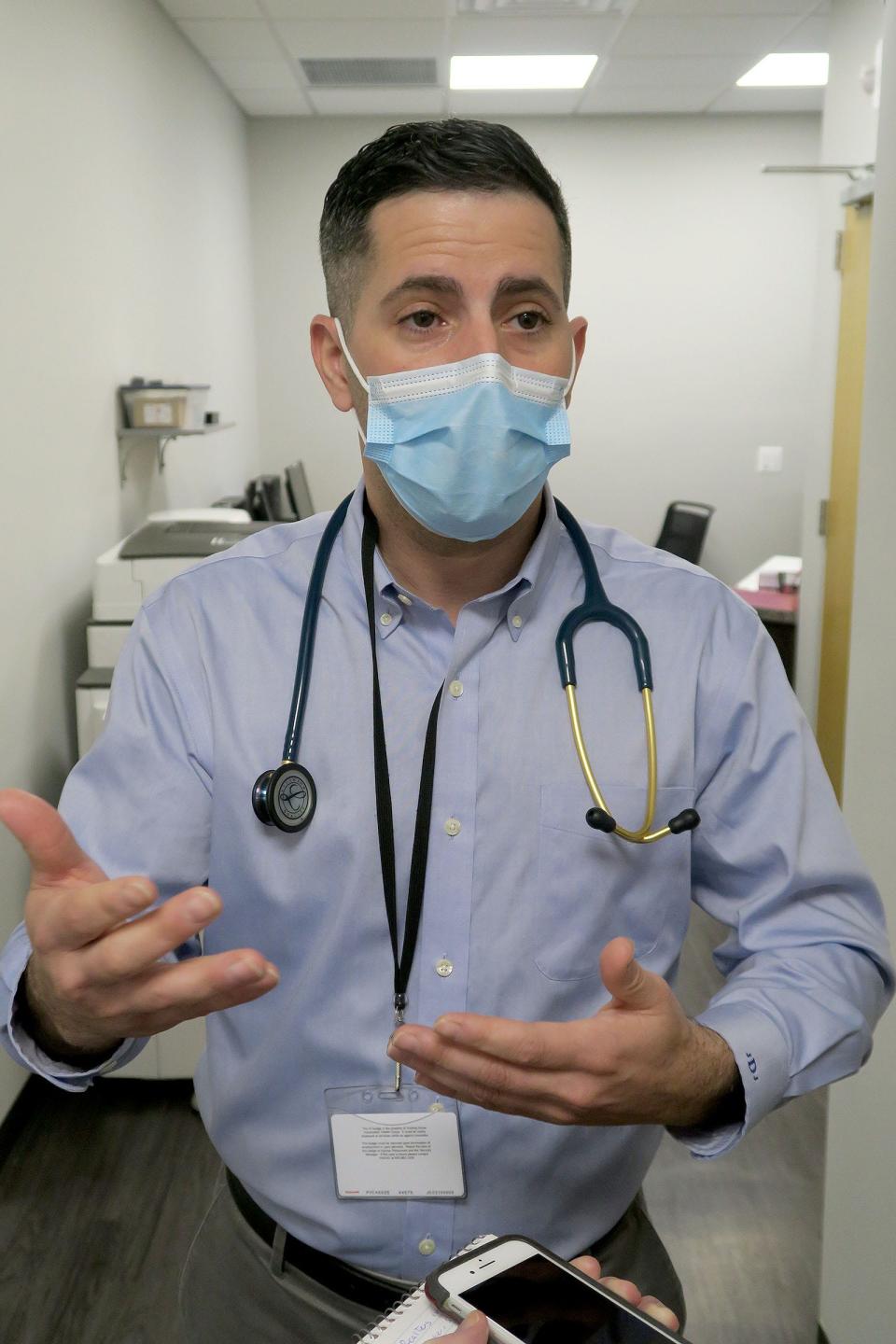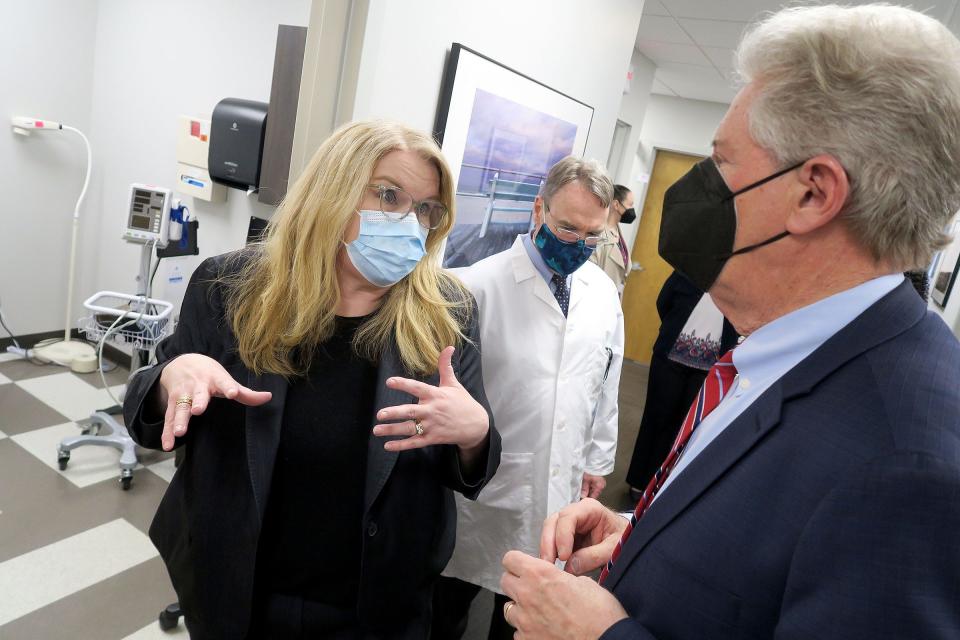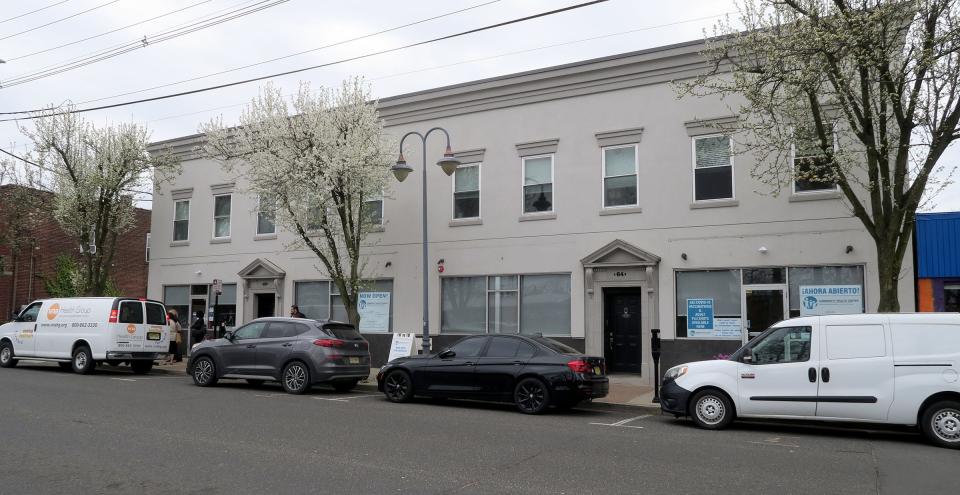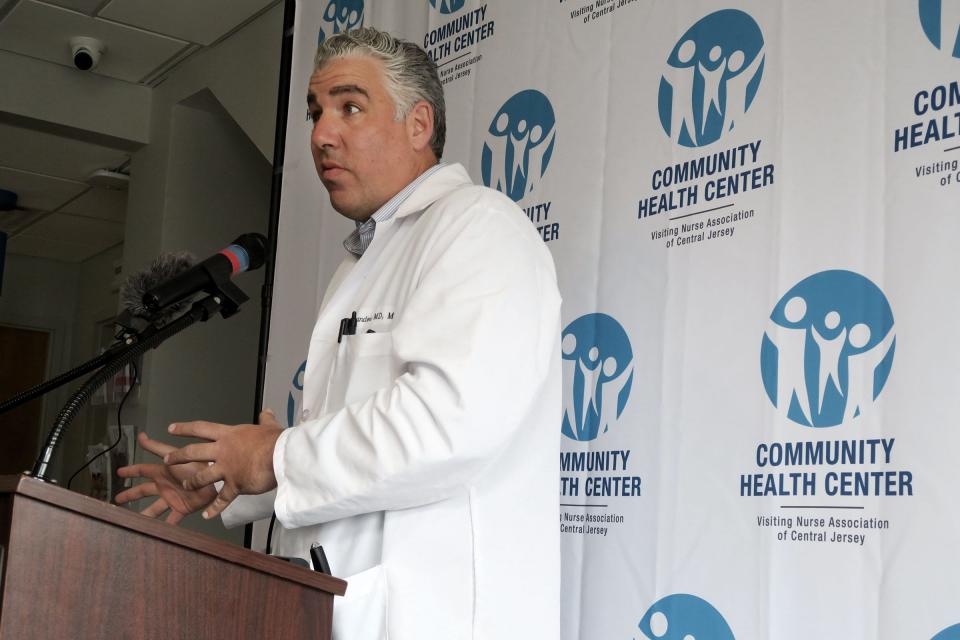These Jersey Shore towns desperately need doctors, so here's what they're doing
RED BANK - There are more lucrative and exciting specialties in health care than being a primary care doctor, but Dr. Jaime Diaz decided this was the field that suited him best.
He sees upwards of 15 patients a day for 10 hours a day at the Red Bank Community Health Center, sometimes helping patients manage chronic diseases, other times helping with personal problems that are bad for their health.
"Every day, not knowing what's going to happen, but knowing that I'm going to be helping out people was just a very heartfelt and rewarding thing for me," said Diaz, 38, a Matawan resident.
If only the health care industry could figure out a way to clone him. Diaz's employer, the Visiting Nurse Association of Central Jersey, has received a $500,000 federal grant for a program designed to attract primary care doctors to its health centers in Red Bank, Asbury Park, Keyport and Freehold.
'We're super excited about this': Red Bank Community Health Center opens in new location

If it works as planned, its patients in those towns will have an easier time finding a doctor who can work with them to prevent illnesses and live happier, healthier lives.
It joins a growing number of programs trying to help the health care industry address a labor shortage that long has been predicted: As the baby boomer generation retires, a flood of primary care doctors and other health professionals are leaving the field — just as the aging population needs more of their help.
Clinics like the ones operated by the VNACJ "serve a very important role because they tend to exist in areas of need," said Dr. Ana Natale-Pereira, an assistant dean at Rutgers New Jersey Medical School in Newark. "I think what happens is not only is there a shortage, but not everybody wants to practice (there), so they traditionally have a challenge of recruitment and retention."
'We need 20% growth'
Diaz bucked the trend. He joined the VNACJ last August, joining a staff of about 30 primary care doctors at the four clinics and pitching in to help with soaring demand. In 2018, the VNACJ had 9,000 individual patients and 29,000 visits. Five years later, the association projects to have 20,000 patients and 65,000 office visits, said Christopher Rinn, chief executive officer of VNACJ.
"I could say we need 35 (doctors), but the demand grows and then we need 38 or 40," Rinn said. "How many do we need? I would say it's appropriate to say we need 20% growth."
New ways to keep people healthy: Jersey Shore hospital tries novel way to ensure violence victims stop getting hurt

Officials say it won't be an easy fix. On Friday, U.S. Rep. Frank Pallone, D-N.J., and Carole Johnson, the former New Jersey Commissioner of Human Services who now leads the federal Health Resources and Services Administration for the Biden administration, were in Red Bank to announce a $500,000 two-year grant to help VNACJ address its labor shortage.
The VNACJ would set up a program so that medical school graduates going into primary care could do their residencies at the community health center instead of hospitals.
"The idea is If somebody who trains and gets their residency in a community health center, they're also more likely to stay here as a doctor," Pallone said.

Good health news: Ocean University Medical Center $20M heart lab can save lives every day with new tech
The VNACJ isn't alone in its search. Nurses' unions recently gathered in Trenton and called on lawmakers to require hospitals to increase staffing, ease the workload and help their members who, they say, are increasingly burning out. Hospitals say they need flexibility in staffing in part because they can't find enough nurses to fill open positions.
The health care industry is getting squeezed by a numbers game, experts said.
More than two in five active physicians will be 65 or older in the next decade — and burnout could prompt more of them to retire sooner than planned, according to the Association of American Medical Colleges, a trade group.
Meanwhile, demand for care is likely to increase. From 2018 to 2033, the U.S. population under age 18 is expected to grow 3.9%, while the population 65 and older is projected to grow by 45.1%, the group said.
It leaves the nation with a shortage of primary care physicians of between 21,400 and 55,200 by 2033, the association said. Since New Jersey accounts for about 3% of the U.S. population, it can expect a shortage of 642 to 1,656 primary care doctors.
Health dangers: Over half of Monmouth, Ocean nursing homes have COVID outbreaks; most staff unboosted

'We know that there is a better way'
Public health advocates say the lack of providers could impact patient health.
"We have a lot of people that have serious illness, but the ultimate, human thing to do is to help people from getting sick in first place, to make sure our communities are healthy," said Dr. Steven Landers, president and chief executive officer of the VNA Health Group. "I think that primary care, community-based medicine is how we accomplish that."
As the demographics shift, policymakers are searching for answers.
Among the ideas:
Rutgers University Medical School, for example, in 2020 provided scholarships to 20 students from underserved communities who planned to practice primary care in Newark and surrounding towns.
The Commonwealth Fund, a research group, recently called on Congress to increase Medicare reimbursements for primary care. The U.S. devotes 5% to 7% of its total health spending on primary care. By comparison, other high-income countries spend about 14% of their total on primary care.
And Johnson noted the Biden administration's budget proposal calls for $2.7 billion in training and recruiting, including an investment in the National Health Service Corps that helps health care providers who work in high-need neighborhoods repay their loans.
The announcement last week in Red Bank, another piece in the puzzle, would give community health centers like the VNACJ a bigger role in training doctors.
"We know that there is a better way, and the better way is to use the footprint of community health centers, to use the strength and the mission (of the centers) to actually train health care providers in the community," Johnson said.
The payoff could be years away. But Diaz, the newest primary care doctor at Red Bank Community Health Center, said he doesn't regret his career choice.
He grew up in Puerto Rico and followed in the footsteps of his father, who also is a family health practitioner. So far, he has managed to avoid feeling too burned out. But he wouldn't mind the help. More primary care doctors would allow him to spend more time with patients.
"We have so many people here who just don't have the resources, and then they come in and can't really take care of themselves," Diaz said. "Being able to provide that for them is very important. And now having this grant to have potential future leaders … learn how it's done in the community I think is a great thing."
Michael L. Diamond is a business reporter who has been writing about the New Jersey economy and health care industry for more than 20 years. He can be reached at mdiamond@gannettnj.com.
This article originally appeared on Asbury Park Press: $500K spent to attract doctors to health centers in Jersey Shore towns

